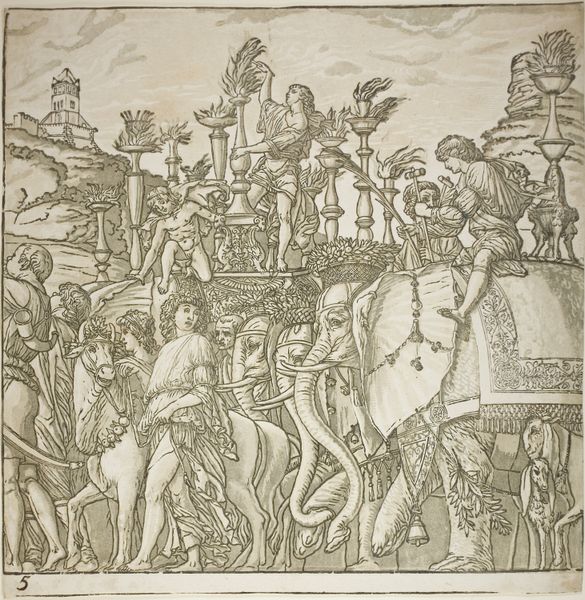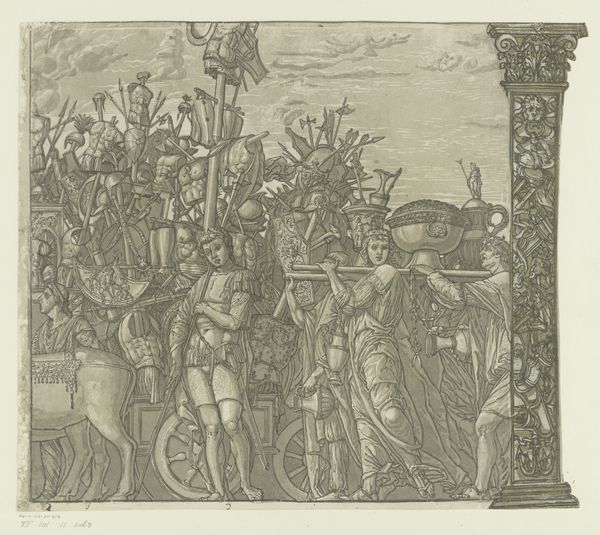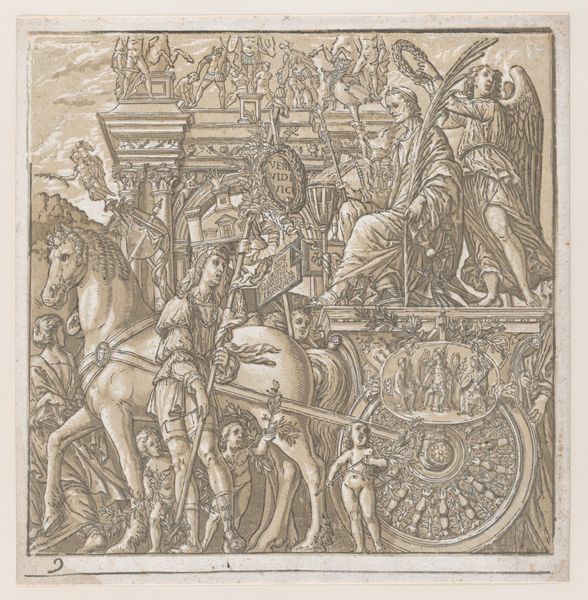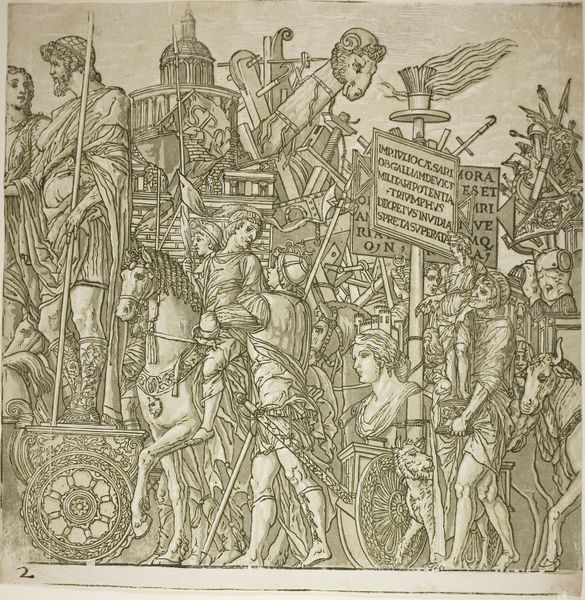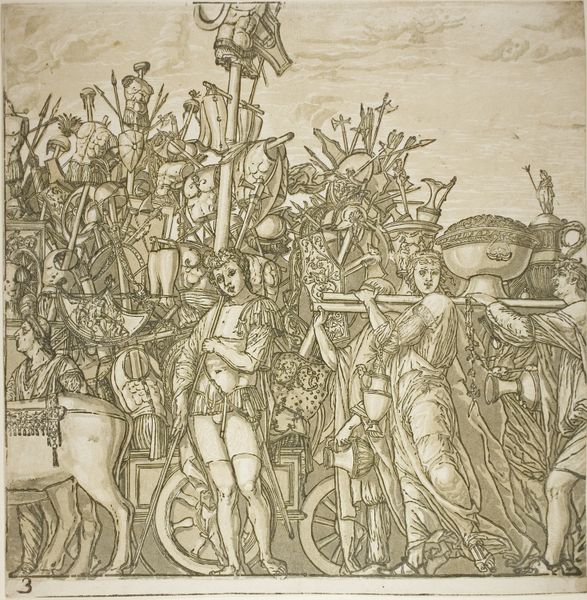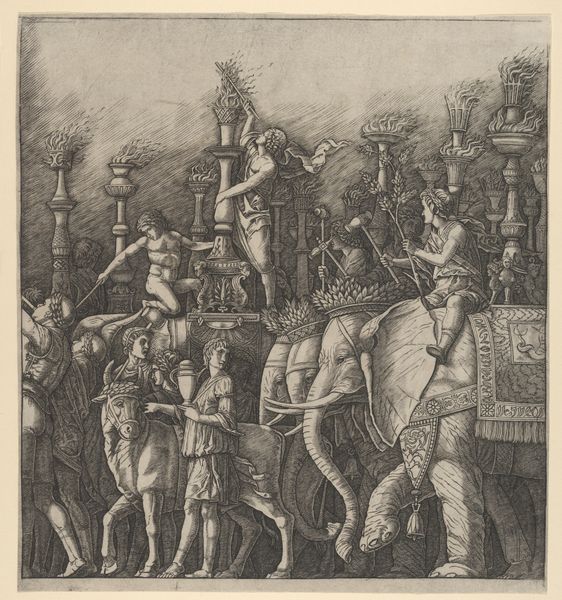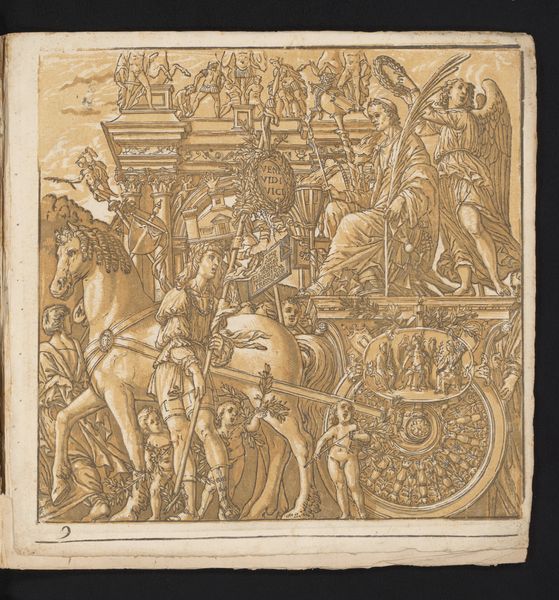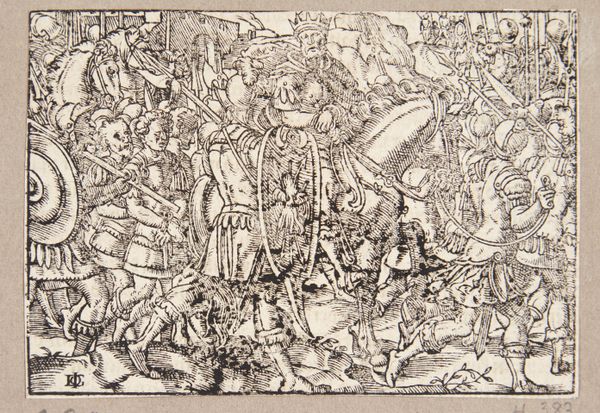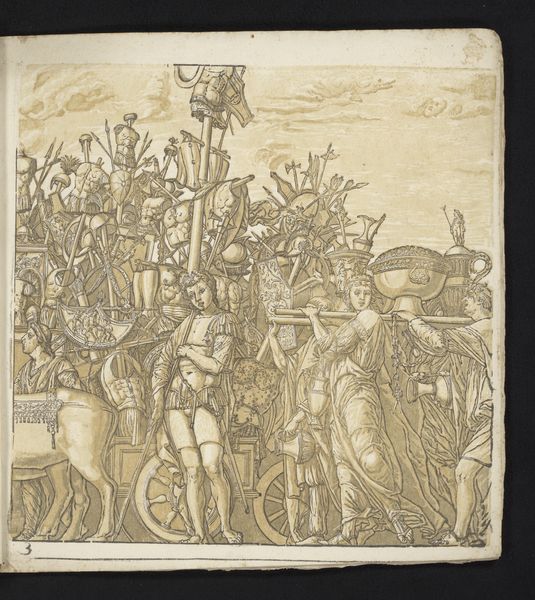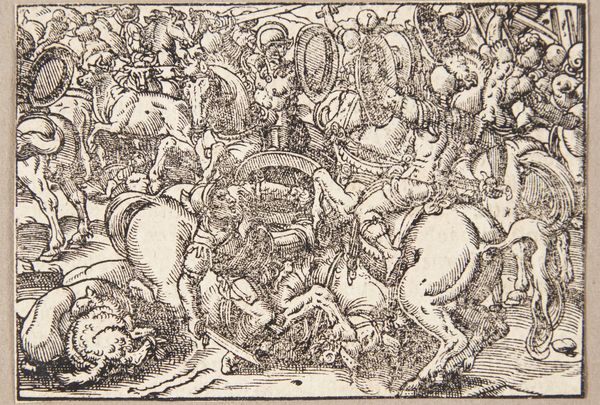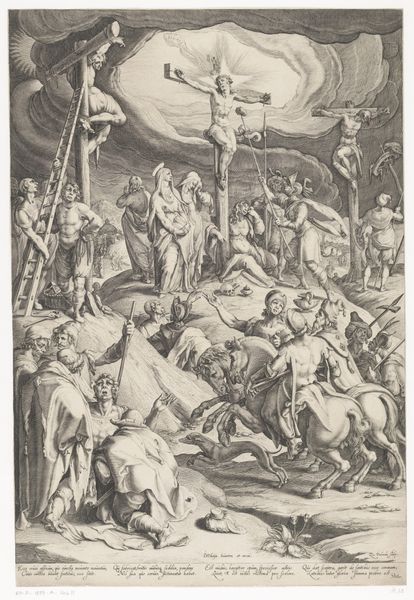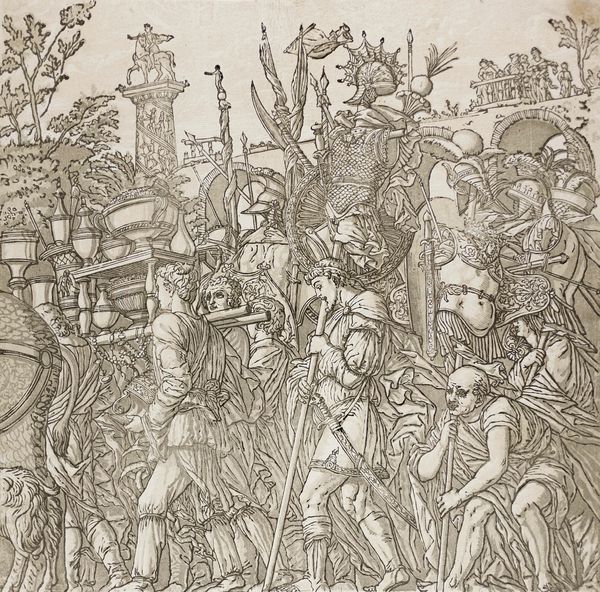
drawing, print, paper, ink, engraving
#
drawing
#
ink drawing
#
allegory
#
ink painting
# print
#
pen sketch
#
figuration
#
paper
#
11_renaissance
#
ink
#
line
#
history-painting
#
italy
#
engraving
Dimensions: 386 × 380 mm
Copyright: Public Domain
Editor: This is Andrea Andreani's "Triumph of Caesar," made in 1599. It's an engraving printed with ink on paper and housed at the Art Institute of Chicago. The detail is astonishing, but it's the overwhelming sense of procession that grabs me. What strikes you most about this piece? Curator: The fascinating aspect for me lies in the materiality and labor involved in its creation. Consider the process: Andreani meticulously carved this complex scene into a woodblock, a task demanding incredible skill and time. This isn't just an image; it's the product of skilled craftsmanship, mediated by tools and physical effort. Editor: So you're focused on the…making of it? Curator: Precisely. Think about the social context too. Prints like these were not unique artworks in the traditional sense. They were reproducible commodities, circulated and consumed by a wider audience than paintings or sculptures ever could reach. This piece makes art and disseminates ideas, no? Editor: I suppose, in a way, it's an early form of mass media. Did the reproducibility affect its value, do you think? Curator: Absolutely. It challenges the traditional notion of artistic "aura" associated with unique works. Its value lies not just in the image itself, but in its accessibility, its function as a medium for disseminating ideas and visual culture within a specific socio-economic context. And this triumph, made affordable by material conditions, celebrated a triumph in the culture that birthed it. What does that say? Editor: I never considered how much the materials dictated the meaning. Now I am looking at the engraving in a different light, it does makes me appreciate not just the final product, but the whole history of its making. Curator: Precisely! It also prompts one to reconsider how categories like “high art” were being both produced and contested at this historical moment.
Comments
No comments
Be the first to comment and join the conversation on the ultimate creative platform.
